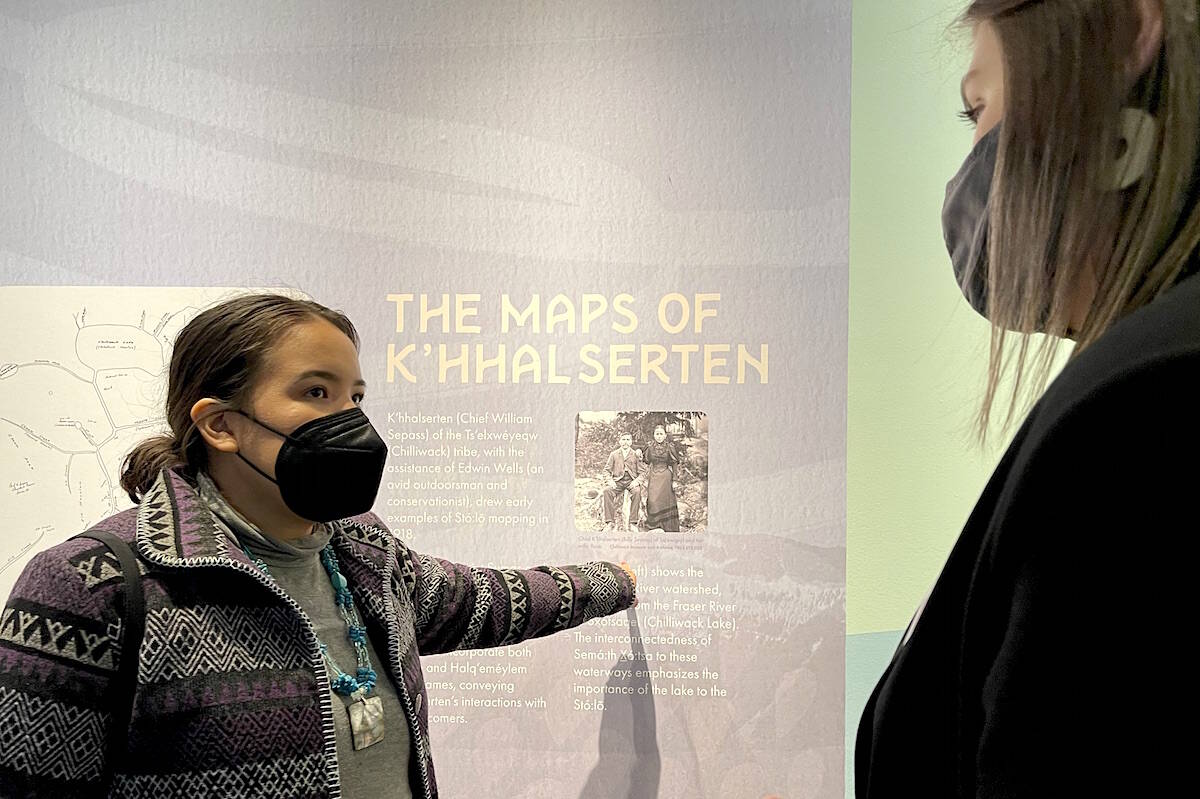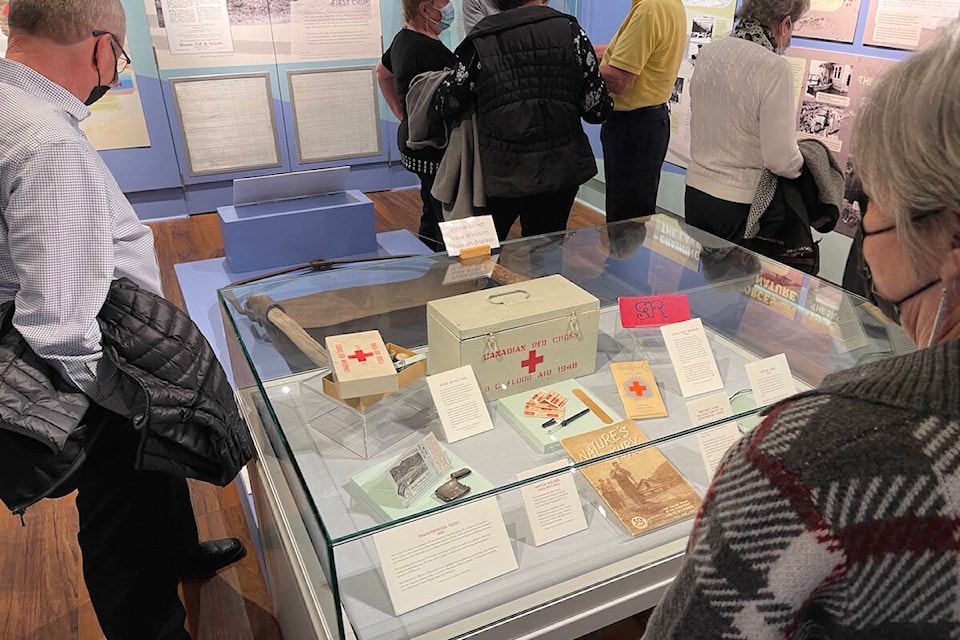The flood-themed exhibition Qoqo: High Water opened Thursday evening with a reception at the Chilliwack Museum.
Qoqo means ‘high water’ in Halq’emeylem, and the title also makes reference to the cyclical flooding on Sumas Prairie, museum curator Kate Feltren explained in her opening remarks.
The massive lake that once covered the area was known as Sema:th Xo:tsa, or Sumas Lake in English, Feltren said.
”As you move through the exhibition, Qoqo: you will discover the history of Sema:th Xo:tsa, its significance to the Stólō people, the events leading to the lake’s draining, and the subsequent impacts on the Stólō and the environment,” Feltren said.
The idea for the exhibit was percolating prior to the devastating flooding that hit the region after back-to-back atmospheric rivers last fall.
“This exhibition was conceptualized before the major weather events of November 2021, during which extremely heavy rain caused the Nooksack River to overflow into Sumas Prairie, causing a breach in the Sumas River dike.
“During that month, our community experienced firsthand the possibility of the return of the lake,” Feltren said.
One of the display panels was a 1930 advertisement in the Chilliwack Progress, from the Vancouver-based sales agents, offering the newly cleared and level land for $127 per acre: “Now you can buy Sumas farm lands at a price and on terms that cannot be duplicated anywhere for land of such quality, accessibility and marketing facilities.”
Part of the rationale for draining Sumas Lake, was to stop the regular flooding, as well as to create farmland.
“Years of development, huge expenditures and expert planning have finally produced this 8,700 acres of magnificent farm land…” according to the ad.
The drainage plan that was eventually enacted in the early 1920s however went ahead despite decades of objections raised by Sto:lo leadership, according to the panel info.
“Draining the lake permanently altered the Stólō way of life, with the emergence of what is now Sumas Prairie between Chilliwack and Abbotsford,” Feltren said.
Seasonal flooding had helped to support a vast array of plant, animal, and human life in the once thriving wetlands surrounding the lake.
Some of the artifacts that help visitors imagine the area before and after the draining of Sumas Lake included a canoe paddle, dip net, reed mat, as well as a sandbag from the Great Flood of 1948, and Red Cross first aid equipment. Visitors could also get a look at some of the wildlife that would have populated the lake and area.
Feltren offered thanks and appreciation to Sto:lo Library and Archives, Great Blue Heron Nature Reserve, and the Reach Gallery Museum for assisting with the development of the exhibition.
Qoqo: High Water, at Chilliwack Museum runs until June 4.
RELATED: Take a journey back to the time of Sumas Lake
Do you have something to add, or a story idea? Email:
jfeinberg@theprogress.com
@CHWKjourno
Like us on Facebook and follow us on Twitter.

